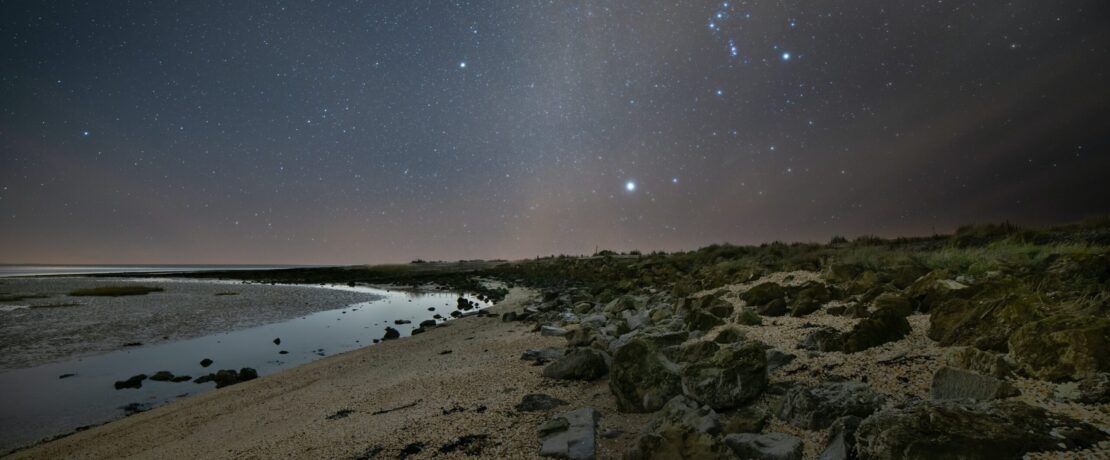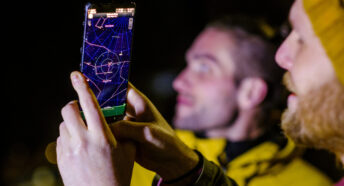How to find constellations in the night sky
If you’ve completed a Star Count with us, you might now be a pro at recognising Orion. But what next? Astronomer Mary McIntyre gives her top tips for finding other constellations too.
As a new stargazer, it can be a bit intimidating trying to learn and locate constellations. But using the brighter constellations as sign posts can help you to find your way around the night sky. All of these constellations can be found with the naked eye – as long as your eyes have adjusted.
Some constellations are visible from the UK all year round, and others are seasonal. Due to the Earth rotating on its axis, the stars are constantly moving, rising in the east and setting in the west. The stars rise four minutes earlier each day and it’s this small change that causes the seasonal variations.
Naming the constellations
Back in prehistory, indigenous peoples around the world were the first to group the brighter stars into named constellations. They told mythological stories about the objects and characters. Throughout history, every major civilisation named its own, but in the western world, we have adopted the Greek or Roman mythology names.
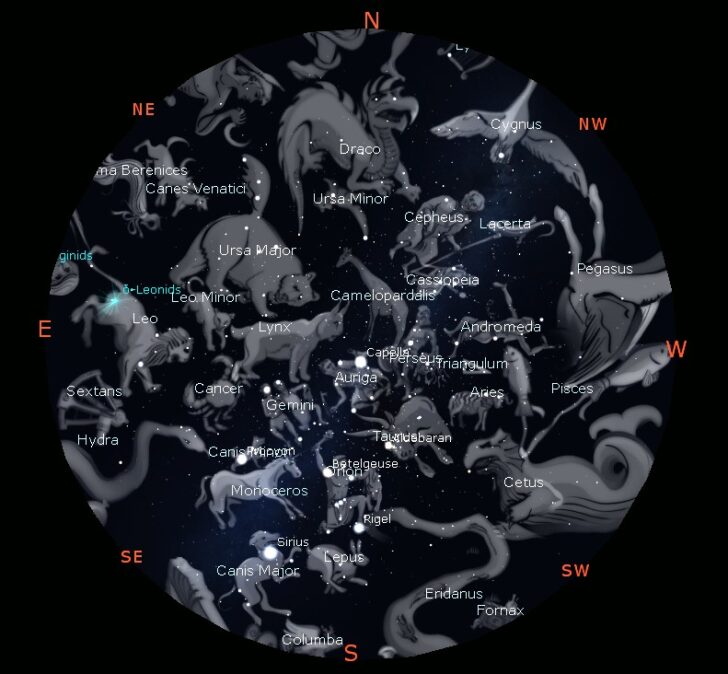
Using The Plough to find Polaris and Ursa Minor
In the northern hemisphere, we’re lucky to have a star very close to the north celestial pole. That star is called Polaris (also known as the Pole Star or the North Star). Polaris is not a particularly bright star but it is easy to find if you use the Plough as a sign post. The Plough is made up of seven stars in the constellation Ursa Major (the Big Bear).
The Plough (also known as the Big Dipper) is located in the northern sky and is circumpolar from the UK. That means it’s visible all year round, but it changes position throughout the seasons, as shown in the picture below.
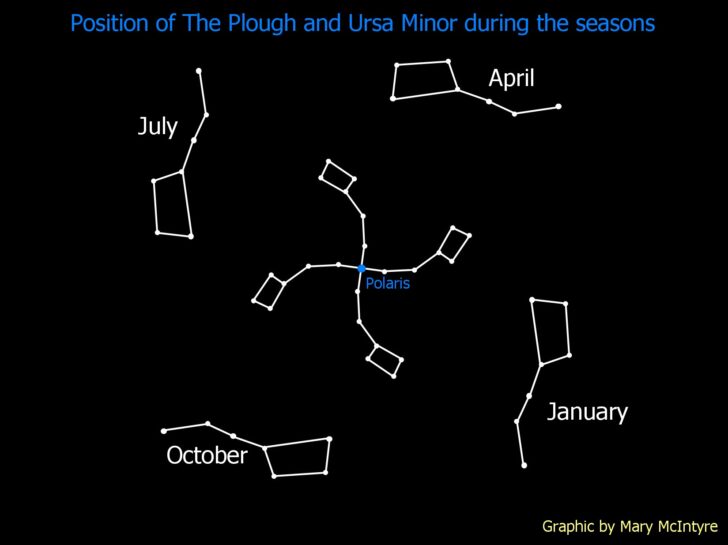
The Plough can be used to locate Polaris. Using the diagram above, follow an imaginary line from the two stars on the outer edge of the bowl. The next star you can see with the naked eye is Polaris. Polaris will not move within our lifetime so you only need to learn this once! Polaris is the end star in a constellation that looks like a smaller version of the Plough. This is Ursa Minor (also known as the Little Bear).
Using The Plough to find Boötes
Between mid-February and mid-October, The Plough can be used to locate the bright, red giant star Arcturus. It has a diameter 25 times greater than our Sun and it has an obvious reddish-orange colour. If you follow the ‘handle’ of The Plough and continue the line downwards, it points straight at Arcturus which lies at the bottom point of the kite-shaped constellation of Boötes (the herdsman).
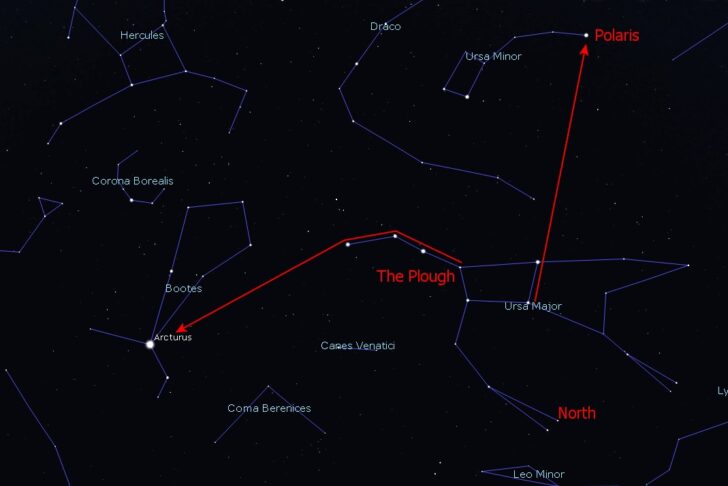
Using Cassiopeia to find the Andromeda galaxy and the square of Pegasus
Located 2.5 million light years away, Messier 31 (the Andromeda galaxy), is the most distant object visible to the naked eye (from a dark sky location).
In photographs, the galaxy has the same diameter as six full moons but to the naked eye, you can only see the bright central region. Although technically visible all year round from the UK, it is best viewed during autumn when it’s at its highest.
To find the Andromeda galaxy, first look for Cassiopeia, a W-shaped circumpolar constellation in the northern sky. Look at the right-hand ‘V’ of the W-shape and Imagine the bottom point is an arrow; follow the line down about three times further than the height of the V and the galaxy lies there. You will only be able to see it with the naked eye if you have given your eyes enough time to get used to the dark – and it will be a tiny grey smudge – but that light has taken 2.5 million years to reach your eyes!
Once you’ve found the Andromeda galaxy, look to its lower right to see the four stars that make up the huge square of Pegasus.
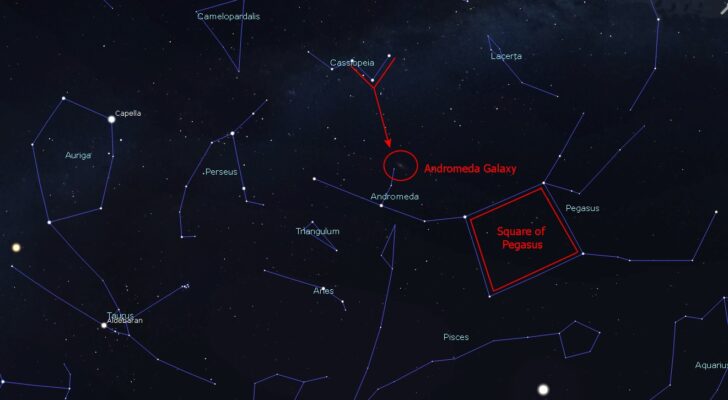
The summer triangle and the milky way
The summer triangle is visible from April to October but is at its highest in the southern sky during the summer months. It is made up of Vega (in Lyra the harp), Deneb (in Cygnus the swan) and Altair (in Aquila the eagle). Cygnus and Aquila lie within the plane of the milky way, which you will easily see from a dark sky location.
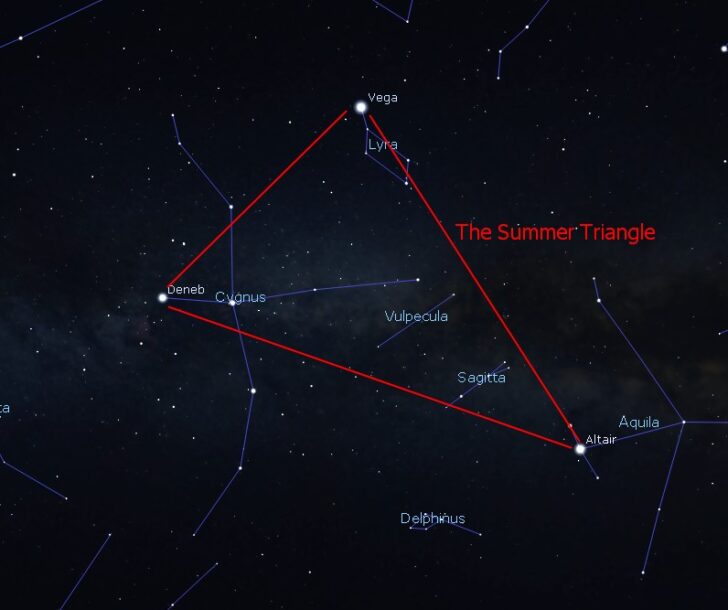
Using Orion to find Sirius, Taurus and the Pleiades
Orion the hunter is one of the most recognisable winter constellations that is at its best from October to January. Orion looks a bit like an old-fashioned egg timer. At the top left corner is the red giant star Betelgeuse (nearly 700 times larger than the sun) and on the bottom right corner is the blue giant star Rigel (79 times larger than the sun). The colour difference between them is very noticeable. The stars below Orion’s belt form his sword; the middle star is Messier 42 the Orion nebula, one of the only nebulae visible to the naked eye.
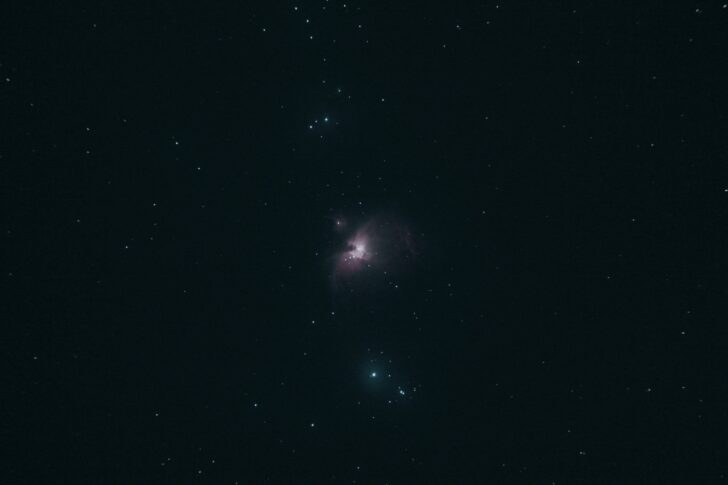
The stars of Orion’s belt point down at Sirius, the dog star. Sirius is a bright star that’s about 1.7 times larger than the sun. It rapidly twinkles with flashes of different colours which show up well in photos.
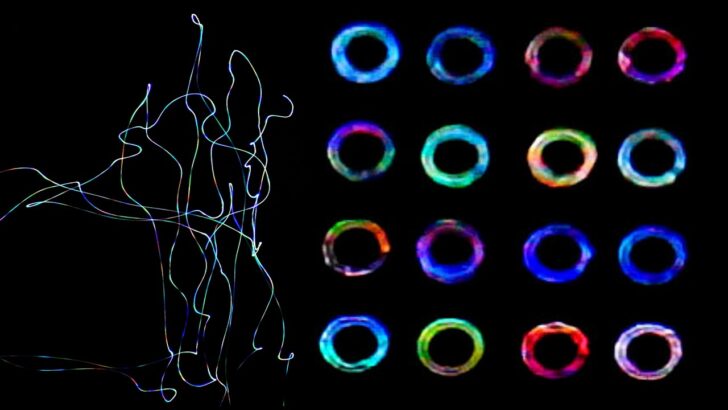
The belt stars point upwards at the red giant star Aldebaran which is part of Taurus the bull. It has a diameter 40 times bigger than our Sun. Continuing that line even further, you will come to the Pleiades, also known as the seven sisters. This little star cluster is gorgeous, and through binoculars, you can really see the blue colour of these young, hot stars.
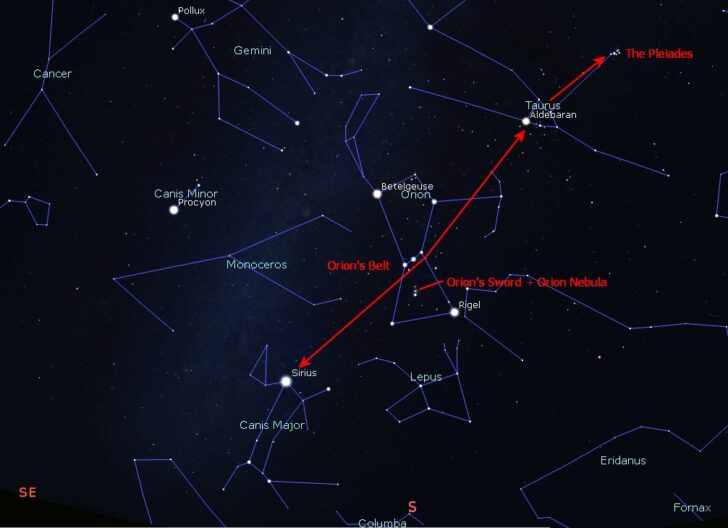
Exploring the night sky
Once you have become familiar with these bright star patterns you can use them to locate some of the fainter constellations and you will soon be able to find your way around the whole night sky.
At CPRE, we’re working hard to rewild the night sky and tackle light pollution. We believe that experiencing truly dark skies is important – not just for humans, but for wildlife too. Find out more about our work on dark skies here.
About the author
Mary McIntyre is an award-winning astronomer and astrophotographer. In 2018 she was elected a fellow of the Royal Astronomical Society, and her work has been featured in Sky at Night magazine, as well as the BBC. In 2021 she was awarded the Sir Patrick Moore prize by the British Astronomical Association for her contributions to astronomy outreach.
